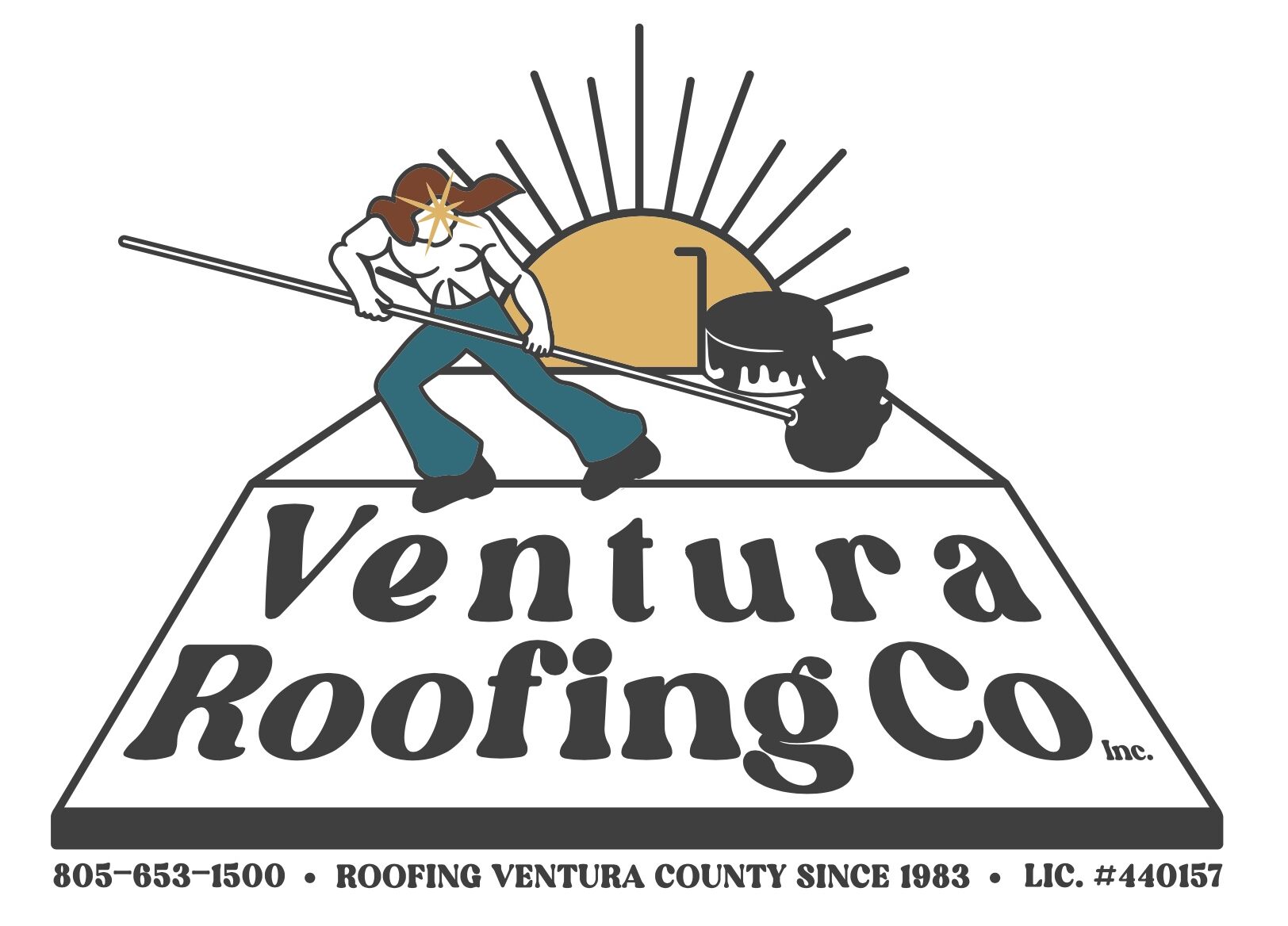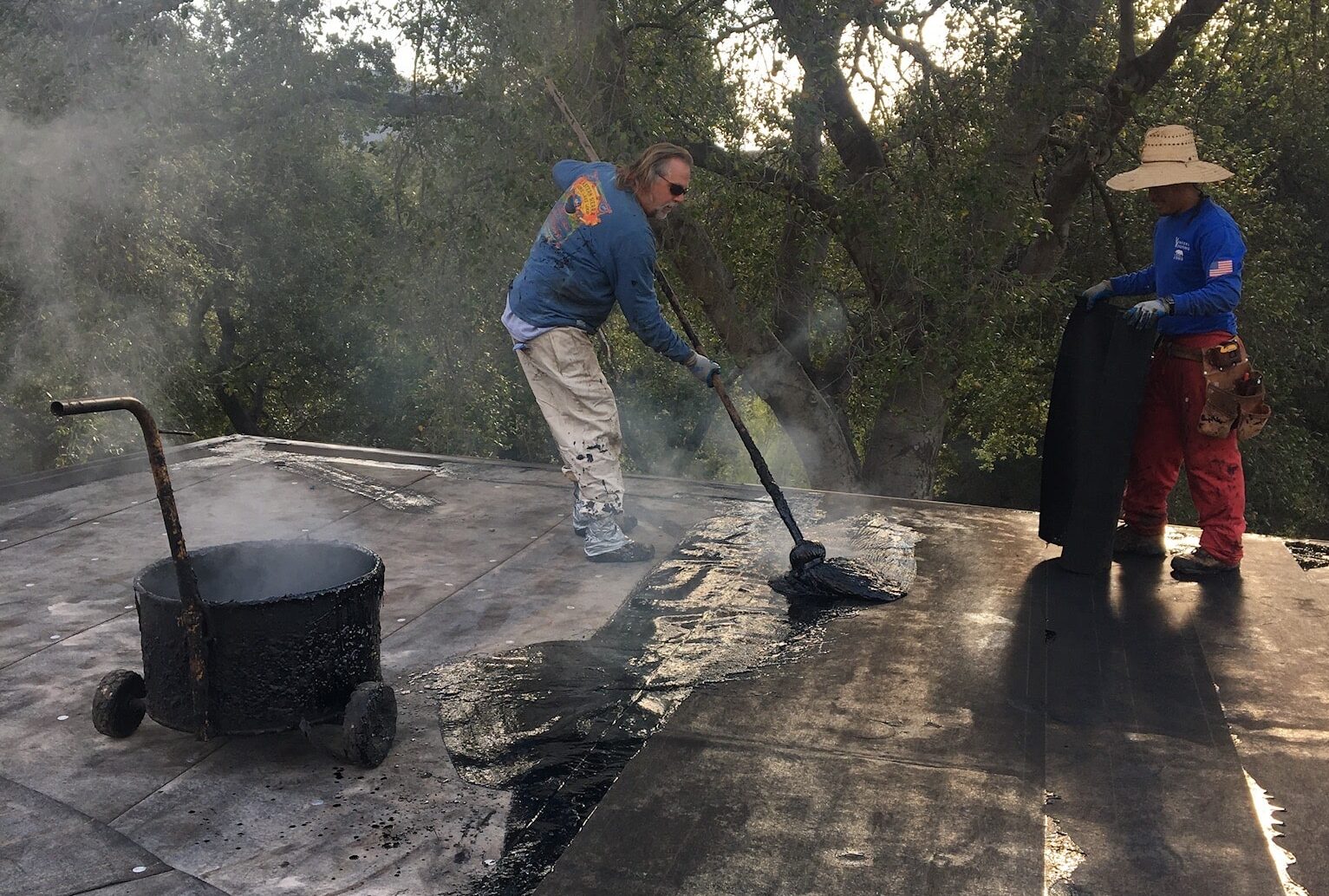What is a hot mop roof? A hot mop roof is a type of flat roof installation where hot asphalt is used to adhere layers of felt together, creating a waterproof barrier. This method is often finished with a layer of gravel or a protective coating, providing durability and resistance against water and weather damage. It’s a cost-effective, reliable solution for commercial and residential buildings requiring robust roofing.
When protecting your residential or commercial building, the roof is pivotal in ensuring durability and resilience against weather elements.
A hot mop roof, known for its robust waterproofing capabilities, is an ideal choice for many. Offering an unbeatable combination of longevity, cost-effectiveness, and reliability, it’s a roofing method that has gained popularity over the years.
In this article, we explore a common question from people interested in installing a new roof – what is a hot mop roof?
What Is A Hot Mop Roof?
So, what is a hot mop roof? A hot mop roof is a type of flat roof installation that involves the application of hot asphalt or tar to create a waterproof barrier on the roof’s surface.
This method is typically used in built-up roofing systems, where multiple layers of roofing felt are bonded with the hot asphalt, creating a dense, impermeable layer.
The final layer often includes a layer of gravel or a similar protective coating to shield against the elements, making it an exceptionally durable roofing solution.
The Hot Mop Roofing Process
The hot mop roofing process is a meticulous method that demands precision and expertise.
Initially, the roof is thoroughly cleaned and prepared, ensuring a smooth and clean surface for the installation.
Roofers then lay down a base sheet over the roof’s surface as the first layer of protection. Following this, multiple layers of roofing felt are rolled out, and hot asphalt is applied between each layer with a mop, bonding them together securely. The hot asphalt acts as a waterproofing agent and glue, creating a solid, cohesive barrier.
The process concludes by applying a top layer, typically gravel or a mineral cap sheet, which is a protective and reflective layer.
This multi-layered approach ensures a robust, waterproof roofing system.
Related: The Benefits of Flat Roof Waterproofing
Advantages of a Hot Mopped Roof
Hot-mopped roofs offer many advantages, making them popular for residential and commercial properties.
Their foremost benefit is their superior waterproofing capability, thanks to the seamless barrier created by the layers of asphalt and roofing felt. This method provides a robust defense against leaks and water damage.
Furthermore, hot-mopped roofs are known for their durability and resilience against harsh weather conditions, including high winds and heavy rains.
The cost-effectiveness of this roofing type is another significant advantage, offering a great return on investment through its long lifespan and minimal need for repairs.
The versatility of hot mop roofing allows it to be applied to various roof shapes and sizes, making it a flexible option for many building types.
Related: 5 Benefits Of A Residential Built-Up Roof
Hot Mop Roof Lifespan
A hot mop roof’s lifespan is impressive, typically 15 to 20 years, making it a long-term roofing solution.
This durability is attributed to the high-quality materials used in the process, such as the thick layers of asphalt and roofing felt, which provide a sturdy and resilient barrier against environmental elements.
The longevity of a hot mop roof can be further extended with proper care and maintenance, including regular inspections and timely repairs. Factors such as the climate, exposure to direct sunlight, and the quality of the initial installation also play crucial roles in determining the exact lifespan of a hot mop roof.
These roofs can surpass their average lifespan with optimal conditions and maintenance, offering excellent value over time.
Maintenance & Repair for Hot Mop Roofing
Maintaining and repairing a hot mop roof is essential for extending its lifespan and ensuring its effectiveness as a waterproof barrier.
Regular maintenance includes debris removal, cleaning the surface to prevent blockages in the drainage system, and inspecting for signs of wear or damage. It’s crucial to address any issues promptly to prevent water infiltration and further complications.
Repairs involve patching small areas where the asphalt has deteriorated or replacing sections of the roofing felt.
Professional roofing contractors should conduct these repairs to ensure they are done correctly and to maintain the roof’s integrity. Proactive maintenance and timely roofing repairs extend the life of a hot mop roof and help preserve the building’s overall structure.
Hire A Professional Roofing Contractor
When installing a hot mop roof, the expertise of a professional roofing contractor cannot be overstated.
Ventura Roofing Co., specializing in built-up and hot mop roofing in Ojai, Ventura County, offers unparalleled service and quality. Our experienced team ensures your roofing project is completed efficiently and effectively, providing lasting protection for your building.
Trust Ventura Roofing Co. for all your roofing needs. Contact us today!
FAQs
Many have questions about hot mop roofing – here are answers to some of the most common inquiries:
What is the life expectancy of a hot mop roof?
A hot mop roof typically lasts between 15 to 20 years, depending on the climate, maintenance, and the quality of the installation. Regular inspections and maintenance can extend its lifespan, offering reliable protection for many years.
How much does a hot mop roof cost?
The cost of a hot mop roof varies depending on the size of the roof and the specific materials used. Still, it is generally considered a cost-effective option for many building owners. It offers a good balance between upfront costs and long-term value, making it an attractive choice for those looking to invest in their property’s durability.
What is the alternative to a hot mop roof?
Alternatives to hot mop roofing include single-ply roofing systems, such as TPO (Thermoplastic Polyolefin) and EPDM (Ethylene Propylene Diene Monomer), which offer different benefits in terms of installation speed, energy efficiency, and environmental impact. The best choice depends on your specific needs and budget.
What are the layers of a hot mop roof?
A hot mop roof comprises several layers, including a base sheet, multiple roofing layers saturated with hot asphalt, and a top layer of gravel or a mineral surface cap sheet. This construction creates a robust, waterproof barrier that protects the building from water intrusion.
Conclusion
A hot mop roof offers an excellent roofing solution, combining durability, cost-effectiveness, and superior waterproofing capabilities.
Whether you’re looking to protect a commercial or residential building, it’s a reliable choice that can serve your needs for years.
Ventura Roofing Co. stands ready to provide top-notch installation and maintenance services for those in Ojai.
Contact us today to ensure your roofing project is in the hands of professionals who care about the longevity and protection of your building.

